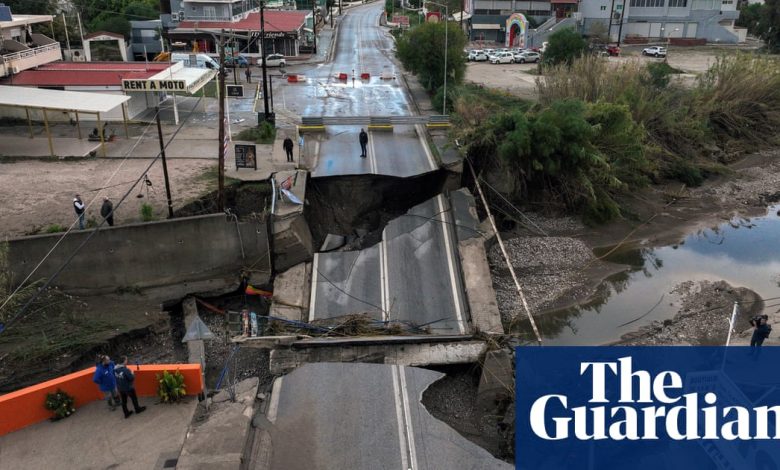Weather tracker: Storm Bora lashes Greece with torrential rain and gale-force winds | Greece

Greece was hit hard by Storm Bora last weekend, with torrential rain, gale-force winds and intense thunderstorms affecting the islands of Rhodes and Lemnos in particular.
The storm formed on Friday, November 29 and quickly strengthened by Saturday, with wind speeds reaching 80 miles per hour. Rhodes experienced 300mm of rain, causing flash flooding and widespread disruption. Power outages, school closures, overturned vehicles and collapsed bridges were reported, along with three deaths.
Authorities have declared a state of emergency in places, with more heavy rain expected to hit Rhodes and other eastern Greek islands in the coming days.
Storm Bora was triggered by a low pressure system over the Ionian Sea that was moving east across Greece. December is usually Greece’s wettest month and Storm Bora follows Storm Alexandros, which also formed in the Ionian Sea and hit the region just a month earlier.
Meanwhile, Australia is experiencing an unusually wet start to summer. Severe thunderstorms lashed eastern areas, bringing heavy rainfall – over 100mm in some areas – and large hail. Sydney, Brisbane and Victoria were particularly affected.
Flash floods submerged parts of Brisbane after 40mm of rain fell in an hour on Sunday. Queensland had more than 200mm in less than 24 hours, while Sydney recorded 25mm in an hour.
The storms were driven by unstable air enhanced by an upper-level slope. This depression caused a phenomenon called cooler air aloft, which enhanced the upward movement of warm, moist air at the surface, increasing atmospheric instability and encouraging the formation of thunderstorms.
According to the Australian Bureau of Meteorology, the country is expected to experience a warmer than average summer, with above average rainfall in the eastern and northwestern regions in December. This is due to higher sea surface temperatures increasing atmospheric humidity. Combined with atmospheric instability, this provides ideal conditions for frequent thunderstorms in the coming weeks.
Over the past few days in South America, strong thunderstorms have affected Brazil, Uruguay and Argentina. Caused by a cyclone along the coast of Uruguay, the storms brought heavy rain and winds of over 50 miles per hour.
The southern Brazilian state of Rio Grande do Sul was hit particularly hard, with powerful winds causing widespread power outages affecting around 3 million people. As of Wednesday, December 4, at least 50 people were injured and extensive damage to homes and infrastructure was reported.




